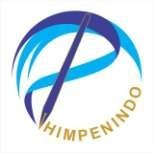Pengaruh Aplikasi Biokom, Coal Fly-Ash, dan Fungi Pelarut P Terhadap Beberapa Sifat Kimia pada Tanah Gambut yang Ditanami Tanaman Jagung (Zea mays)
Abstract
As long as the issues with peat soil, particularly with some of its chemical qualities, can be treated properly, it has the potential to be utilized as agricultural land. Empty oil palm fruit bunches (EFB), which are produced by the size of oil palm farms, can be used to make biochar and EFB compost, which are then combined to create biokom, which can enhance soil structure and increase the availability of phosphorus in peat. Aspergillus oryzae-Tb7 is one of the phosphore solubilizing fungus (FPP) that aid in accelerating the release of accessible P. The byproduct of burning coal in a PLTU that is alkaline by nature and capable of raising soil pH to promote an increase in available P is known as coal fly ash (CFA). The goal of this study's conclusion was to ascertain the impact on the chemical characteristics of maize plants' uptake of P as well as soil pH, CEC, soluble Fe, and available P.A single-component, completely randomized design was used in this study (CRD). The factors A 0, which stood for "control without treatment," A1, "P fertilizer," A2, "P + Biochar fertilizer," A3, "P
+ CFA fertilizer," A4, "P fertilizer + Biokom + FPP," and "P fertilizer + Biokom + CFA + FPP," were tested. There were three repetitions of each therapy, yielding 18 trials. The findings show that the use of biokom, FPP, and CFA can improve P uptake, soil pH, CEC, and soil-accessible P while lowering plant dry weight and soluble Fe.
References
Annisa, W., Subagio, H. 2017. Analisis Profil Pengaruh Bahan Organik Terhadap Konsentrasi Besi Ferro dan Serapannya di Lahan Rawa Pasang Surut. Balai Penelitian Lahan Rawa. Loktabat Utara. Banjarbaru.
Aryonugroho, A., Lestari, N.D. 2021. Pengaruh Vermikompos Abu Terbang Batubara Menggunakan Cacing Tanah Eisenia Fetida Terhadap N, P, K, dan Pb. Jurusan Tanah, Fakultas Pertanian, Universitas Brawijaya. Malang.
Balai Besar Penelitian dan Pengembangan Sumberdaya Lahan Pertanian. 2016. Laporan Tahunan BBSDLP 2015: Inovasi Teknologi Sumberdaya Lahan untuk Pertanian Berkelanjutan. Badan Penelitian dan Pengembangan Pertanian, Kementerian Pertanian.
Barchia, M.F. 2002. Emisi Karbon dan Produktivitas Tanah pada Lahan Gambut yang Diperkaya Bahan Mineral Berakdar Besi Tinggi pada Sistem Olah Tanah yang Berbeda. Disertasi. Institut Pertanian Bogor. Bogor.
Ichriani, G.I., Syekhfani, Nuraini, Y., Handayanto, E. 2018. Formulation of biochar-compost dan phosphate solubilizing fungi from oil palm empty fruit bunch to improve growth of maize in an Ultisol of Central Kalimantan. Journal of Ecological Engineering 19(6): 45-55.
Fahrunsyah, Kusuma, Z., Prasetya, B. Handayanto, E. 2018. Improvement of some chemical properties of an Ultisol of East Kalimantan through the application of combined coal fly ash dan oil palm empty fruit bunch. Bioscience Research 15(3): 1805-1815
Gunawan, Wijayanto N., Budi S.W. 2018. Karakteristik sifat kimia tanah dan status kesuburan tanah pada agroforestri tanaman sayuran berbasis Eucalyptus Sp. Jurnal Silvikultur Tropika 10(02): 63-69.
Kaur, R., Goyal, D. 2015. Mineralogical studies of coal fly ash for soil application in agriculture. Journal Particulate Energy dan Science 33(1):76-80. https://doi.org/10.1080/02726351.2014.938378
Maulidya, A. 2021.Perubahan pH dan Besi Larut Amelioran di Tanah Sulfat Masam. Universitas Lambung Mangkurat. Banjarbaru.
Masganti. 2003. Kajian Upaya Meningkatkan Daya Penyediaan P dalam Gambut Oligotrofik. Disertasi. Program Pascasarjana Universitas Gajah Mada. Yogyakarta.
Mateus, R., Kantur, D., Moy, L.M. 2017. Pemanfaatan Biochar Limbah Pertanian sebagai Pembenah Tanah untuk Perbaikan Kualitas Tanah dan Hasil Jagung di Lahan Kering. Politeknik Pertanian Negeri Kupang. Nusa Tenggara Timur.
Murugan, S. Vijayarangan, M. 2013. Effect of fly ash in agricultural field on soil properties dan crop productivity – A Review. International Journal of Engineering Research dan Technology 2(12): 54-60.
Nurida, N, Sutono, L., Muchtar. 2017. Pemanfaatan Biochar Kulit Buah Kakao dan Sekam Padi Untuk Meningkatkan Produktivitas Padi Sawah di Ultisol Lampung. Balai Pengkajian Teknologi Pertanian Sulawesi Tengah. Palu
Priatmadi, B.J., Saidy, A.R., Septiana, M. 2014. Pemanfaatan abu batubara untuk peningkatan produksi padi dan penurunan emisi gas rumah kaca pada lahan basah sub-optimal. Laporan Akhir Penelitian Unggulan Perguruan Tinggi Universitas Lambung Mangkurat. Banjarbaru.
Sari M.N., Sudarsono, Darmawan. 2017. Pengaruh bahan organik terhadap ketersediaan fosfor pada tanah-tanah kaya Al dan Fe. Buletin Tanah dan Lahan (1): 65-71.
Sitohang, E.A., Utomo, W.H. 2018. Pengaruh Residu Biochar Tongkol Jagung Diperkaya Amonium Sulfat Terhadap beberapa Sifat Tanah dan Pertumbuhan Tanman Jagung Manis di pH Tanah yang Berbeda. Universitas Brawijaya. Malang
Soil Survey Staff. 2003. Soil Taxonomy a Basic System of Classification for Marking and Interpreting Soil Surveys. Second Edition. Resource Conservation Cervice, USDA. Washington D. C. 869 p.
Tuniah. 2013. Ketersediaan P Pada Tanah Timbunan Abu Batubara (Fly Ash dan Bottom Ash) Limbah pembakaran Batubara Serta Potensinya Untuk Tanman Jagung (Zea mays L). Universitas Lambung Mangkurat. Banjarbaru
Utomo, B. 2009. Pengaruh Bioaktivator terhadap Pertumbuhan Sukun (Artocarpus communis Forst) dan Perubahan Sifat Kimia Tanah Gambut. Universitas Sumatera Utara.
Waksman, S.A., Starkey, R.L. 1981. The Soil dan The Microbe. John Wiley dan Sons, Inc. New York.

















